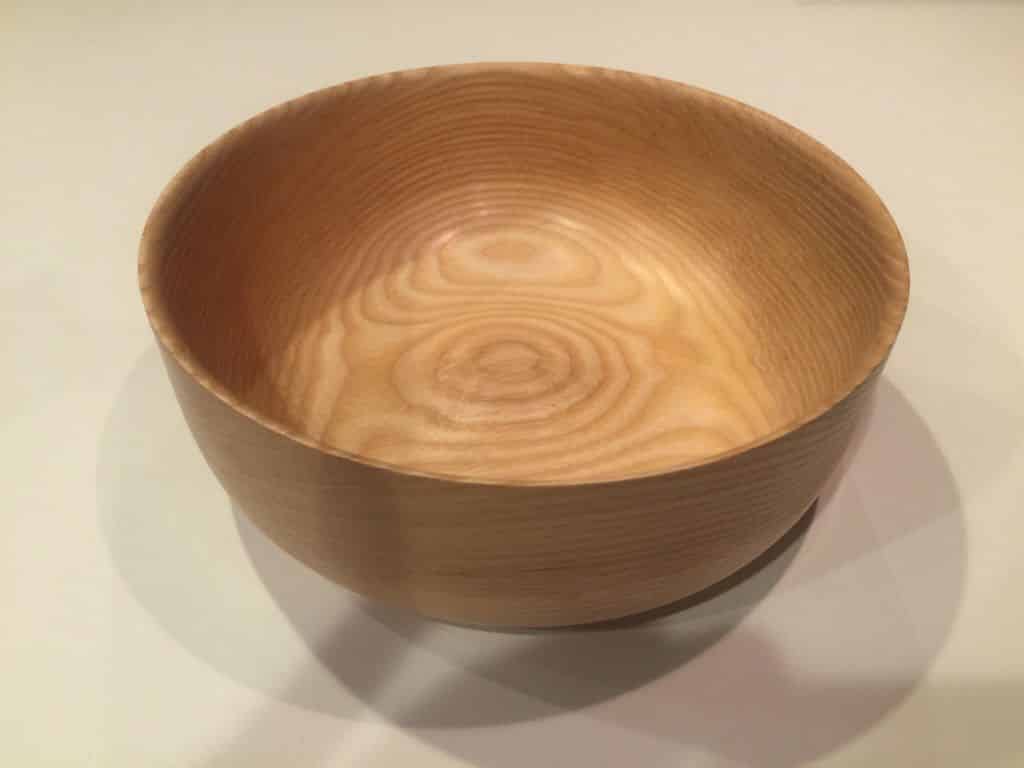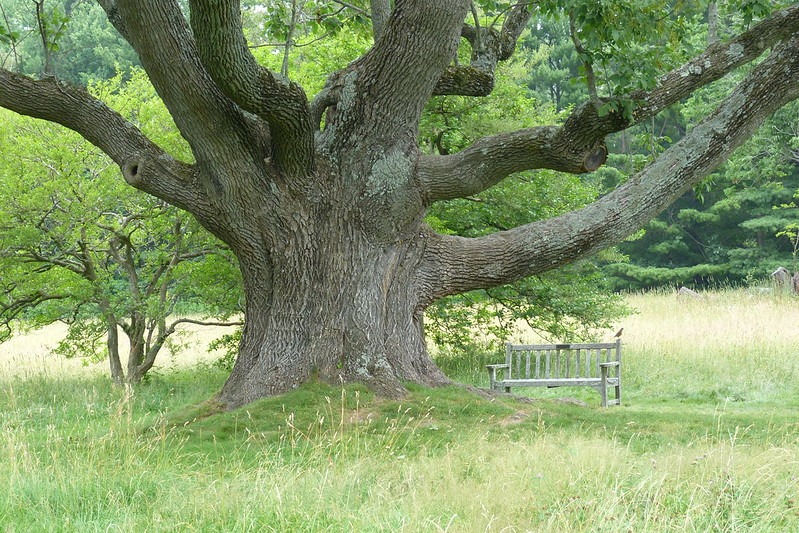If you’ve ever wondered, “Is ash good for woodturning?” then you’re in the right place! Woodturning is a fascinating craft that allows you to shape and create beautiful objects out of wood. And when it comes to woodturning, the type of wood you use plays a crucial role in the outcome of your project.
Now, let’s talk about ash. Ash wood is known for its strength, durability, and beautiful grain patterns. It’s widely used in various woodworking projects, and yes, it can be an excellent choice for woodturning too! The unique properties of ash make it ideal for creating bowls, vases, and other turned objects that require sturdiness and a smooth finish.
So, if you’re eager to explore the world of woodturning and wondering if ash is a good option, keep reading! We’ll delve deeper into the characteristics of ash wood and why it’s a popular choice for woodturners. Get ready to unleash your creativity and turn your woodworking dreams into reality with ash!

Is Ash Good for Woodturning?
Woodturning is a popular craft that involves shaping wood into various objects using a lathe. One of the key factors that determine the success of a woodturning project is the type of wood used. Ash, a hardwood species found in many parts of the world, is often considered a suitable choice for woodturning due to its unique characteristics. In this article, we will delve into the question of whether ash is good for woodturning and explore the reasons behind its popularity among woodturning enthusiasts.
The Beauty of Ash in Woodturning
1. Appearance and Grain Patterns
Ash is well-known for its beautiful appearance and distinctive grain patterns, making it a favored choice for woodturners. The wood typically has a light creamy color with subtle variations that can range from pale yellow to light brown. Its open grain structure adds depth and character to turned objects, providing a visually appealing result. The straight grains of ash make it relatively easy to work with, allowing turners to achieve clean and precise cuts.
2. Durability and Strength
Despite its relatively low density compared to some hardwoods, ash is surprisingly strong and durable. This makes it a practical choice for woodturning projects, as the final turned objects can withstand regular use without significant wear and tear. Ash is also known for its excellent shock resistance, which is especially useful when turning items like tool handles or furniture components that may be subjected to constant impact.
3. Versatility
Ash is a versatile wood that can be used for a wide range of woodturning projects. Its ability to hold intricate details and fine finishes makes it suitable for both functional and decorative items. Whether you’re turning a bowl, vase, spindle, or even a decorative sculpture, ash can be shaped and finished to achieve the desired result. Its versatility extends beyond woodturning, as ash is commonly used in industries such as flooring, furniture, and cabinetry.
Ash vs. Other Wood Species in Woodturning
Having explored the benefits of ash in woodturning, it’s important to compare it with other popular wood species to get a well-rounded understanding of its suitability for different projects.
1. Ash vs. Maple
Both ash and maple are hardwoods commonly used in woodturning. While both have attractive grain patterns, ash is generally lighter and has a more noticeable grain. Maple, on the other hand, is smoother and has a more consistent color. When it comes to strength and durability, ash has a slight edge over maple due to its higher density. However, maple is often preferred for its fine texture and ability to hold intricate details.
2. Ash vs. Walnut
Walnut is another hardwood that is frequently used in woodworking and woodturning. It has a rich dark brown color and a smooth texture, offering a unique aesthetic appeal. In terms of workability, ash is generally easier to turn compared to walnut, as walnut can be prone to tearout. However, walnut is better known for its durability and stability, which can make it a preferable choice for certain projects.
3. Ash vs. Oak
Oak is a well-known hardwood that is popular in various woodworking applications. While oak has a more pronounced grain pattern and a distinctive texture, ash tends to have a lighter and more uniform appearance. Oak is generally harder than ash, which can make it more challenging to work with. However, oak is highly durable and can withstand heavy use, making it suitable for projects that require maximum strength.
Maximizing Success with Ash in Woodturning
After considering the benefits of ash and comparing it with other wood species, here are some tips to help you maximize your success when working with ash in woodturning:
1. Choose Quality Ash Wood
Selecting high-quality ash wood is essential for achieving excellent results in woodturning projects. Look for well-seasoned wood with minimal defects such as knots, cracks, or warping. This will ensure that the wood is stable and less likely to cause issues during turning.
2. Use Proper Tools and Techniques
Investing in high-quality woodturning tools and using the appropriate techniques will greatly enhance your woodturning experience with ash. Sharp tools and proper cutting techniques will minimize tearout and allow you to achieve clean cuts and smooth finishes.
3. Take Advantage of Ash’s Characteristics
Experiment with different cuts and shapes to fully utilize ash’s unique grain patterns and open structure. Consider the final purpose of the turned object and let ash’s versatility shine through by incorporating the natural beauty of the wood into your design.
In conclusion, ash is indeed a good choice for woodturning due to its visual appeal, durability, strength, versatility, and ease of workability. By understanding its unique characteristics and following the right techniques, you can maximize your success in woodturning projects using ash wood. So, go ahead and explore the endless possibilities of turning ash into stunning creations!
Key Takeaways: Is Ash Good for Woodturning?
- Ash is a popular wood choice for woodturning due to its strength and versatility.
- It is relatively easy to work with and has a beautiful grain pattern.
- Ash is known for its durability, making it suitable for functional and decorative woodturning projects.
- It can be turned into various shapes and forms, allowing for creativity and experimentation.
- When properly finished, ash can result in a smooth and polished surface, enhancing the overall look of woodturning projects.
Frequently Asked Questions
Welcome to our FAQ section, where we answer some common queries about woodturning and the use of ash. Whether you’re a beginner or a seasoned woodturner, we hope to provide you with valuable insights. Read on to find out more about ash and its suitability for woodturning!
1. What are the benefits of using ash for woodturning?
Ash has several qualities that make it great for woodturning projects. It is known for its excellent workability, allowing you to easily shape and turn it on a lathe. Ash also has an attractive grain pattern, ranging from straight to wavy, which adds visual appeal to your finished work. Additionally, ash is relatively strong and can withstand the forces exerted during the woodturning process, making it a durable choice.
Furthermore, ash has good dimensional stability, meaning it resists warping and shrinking to a certain extent. This makes it suitable for various woodturning applications, including bowls, vases, spindles, and furniture components.
2. Are there any downsides to using ash for woodturning?
While ash is generally considered a great wood for turning, it does have a few limitations to keep in mind. One of the potential downsides is that ash can be prone to tear-out, especially if you’re doing intricate or delicate work. To minimize this, it’s recommended to use sharp tools and take light cuts when working with ash.
Another factor to consider is ash’s susceptibility to insect attacks and decay. If used outdoors or in humid environments, it’s important to protect ash projects with a suitable finish or preservative to prevent damage over time. Additionally, ash tends to have a strong grain pattern, which may not be to everyone’s aesthetic preference.
3. Can beginners use ash for woodturning?
Absolutely! Ash is a popular choice among beginners in the woodturning community. Its workability and forgiving nature make it a great wood for those starting out. While it may require some practice to avoid tear-out, with proper technique and patience, beginners can achieve satisfying results with ash. It’s also a more affordable option compared to some exotic woods, allowing beginners to experiment and hone their skills without breaking the bank.
However, it’s always important to take safety precautions, use appropriate tools, and seek guidance from experienced woodturners or instructors when starting any new woodworking project.
4. How should ash be prepared before woodturning?
Before you begin woodturning with ash, it’s important to properly prepare the wood. Start by rough-cutting the ash into a slightly oversized blank. Seal the ends with a wax or commercial end-grain sealer to slow down moisture loss and prevent cracking. It is also beneficial to let the blank stabilize in a controlled environment for a few weeks, allowing the wood to reach an equilibrium moisture content.
Once the wood is dry and ready to be turned, mount the blank securely on a lathe and gradually shape it into your desired form using sharp tools. As you work, monitor the moisture content of the ash, as excessive moisture can still lead to cracking even after initial drying.
5. Are there other types of wood suitable for woodturning?
Ash is just one of many options available for woodturning. Other popular woods for woodturning include maple, cherry, walnut, and oak. Each wood has its own unique characteristics and advantages. For example, maple is known for its light color and fine texture, walnut for its rich dark hues, and oak for its durability. It’s worth exploring different wood species to discover your preferences and the specific properties that suit your woodturning projects.
Ultimately, the choice of wood depends on the desired end result, personal preference, and availability of materials. Experimentation is key to finding the perfect wood for your turning projects!

Woodturning – Ash Crotch Surprise!
Summary
So, is ash good for woodturning? Well, it turns out that ash is a great wood for turning! Its strong and flexible nature makes it ideal for creating beautiful and intricate designs. Plus, it’s readily available and relatively affordable, which is great news for aspiring woodturners. However, it’s important to note that different species of ash have different qualities, so it’s essential to choose the right type for your project. Remember to wear safety gear and double-check if the ash wood you’re using is properly seasoned for optimal results. Happy woodturning!